Lifecycle Management
• 7 min read
How To Boost IT Teams’ Efficiency with IT Process Automation
6th February, 2023
SHARE ON:
Workflow automation removes potential errors arising from manually-operated tasks and streamlines the process with less human intervention. It improves the visibility of the processes, sheds light on bottlenecks, provides recommendations for improvement, and enhances overall business performance.
The productivity of an enterprise is automatically reduced when individuals spend their time doing regular repetitive tasks. For example, manual approval for user access, app requests, raising tickets, and other bottlenecks limits the efficiency of the process and increases the burden on the IT teams.
As a result, IT teams spend a lot of time doing the same things. Thus, automating daily repetitive tasks speeds up processes, improves IT efficiency, and boosts ROI.
IT process automation, or ITPA, is the practice of automating IT services, support, and operational tasks into business workflows. It uses artificial intelligence, application programming interfaces (APIs), and other tools to automate repetitive tasks. ITPA aims to increase IT operations professionals' efficiency, speed, and reliability to focus on more strategic tasks.
When your business achieves process efficiency, ITPA provides benefits that consist of:
Reduced errors: Automation increases business productivity and lowers or eliminates frequent errors caused by manual procedures.
Increased productivity: Efficient processes automatically increase productivity; automation removes bottlenecks and helps employees work efficiently on other business operations.
Higher customer satisfaction and employee engagement: IT teams have more time to devote to customer-facing tasks, such as troubleshooting issues and providing support. This can improve the overall customer experience.
Low operating cost: Business efficiency occurs when there is a reduction in lead time, which is possible through automation, which helps banish occurrences that add extra cost.
Higher resource utilization: Efficiency achieved through automation helps you forecast and use the software to its full potential.
How To Decide if an IT Process Needs To Be Automated?
Your organization consists of numerous processes involving several repetitive tasks that must be ideal for automation. Usually, all highly extensive, repetitive, tedious, and consistent tasks are automation opportunities. The processes that require automation can be identified easily by looking at the indication and function of the task.
To decide if an IT process needs to be automated, consider the following factors:
Repeatability: If a repetitive task requires little human decision-making, it is likely a good fit for automation.
High Volume: Automation can save time and resources if a task needs to be done frequently or in large quantities.
Error rate: There are many tasks in an organization that are error-prone if done manually, like managing thousands of SaaS apps in an organization. Such tasks are a good automation opportunity because they can reduce human error and improve accuracy.
Time-sensitive: Some daily tedious tasks like large-scale employee onboarding can be a good candidate for automation. Because these tasks take a lot of time if done manually. Here, automation can help you speed up processes and meet tight deadlines.
Ultimately, the decision to automate a process should be based on a cost-benefit analysis, considering the potential return on investment and any potential drawbacks.
4 Ways in Which You Can Use IT Process Automation to Enhance IT Teams’ Efficiency
Increasing productivity is not the only reason for IT process automation; there are several other reasons for automating specific IT tasks, which include:
Increasing the benefit of the product or service to the customer.
Increasing the predictability or accuracy of the procedures.
Enhancing the overall experience of the consumer.
Making things better for both internal and external process customers.
Through human-centred automation, work can be made more varied and enjoyable.
Irrespective of why you want to automate these repetitive tasks, identifying your goals can assist you in prioritizing the workflows and task automation that require your attention first.
Here are the four ways in which you can use IT process automation within your SaaS management practice:
1. Automate SaaS management process
Today, SaaS management tools help you gain control over your SaaS ecosystem by providing real-time app insights, usage data, and app owner's data. As a result, you can get better control and visibility over your SaaS stack and validate user access. Furthermore, using a SaaS management tool, you can automate the whole SaaS infrastructure and get all the info in one dashboard. Further, IT teams can discover any hidden SaaS apps used by employees; hence, there is no space for shadow IT.
Moreover, IT teams can automate SaaS renewals using SaaS management software. These tools send alerts and reminders to the IT teams for contract and payment renewals. The IT teams can set reminders and be notified when the date approaches. This helps save costs, keep all contracts updated, and helps in removing licenses that are no longer in use.
2. Automate onboarding & offboarding
Saas management tools automate the onboarding and offboarding of employees into the organization's SaaS apps. In addition, the platforms automate employee provisioning into the tools within just a few clicks and instantly allow IT teams to provide app access to the staff.
When the employees leave the organization, the IT teams can offboard them by using the deprovisioning capability of the SaaS management tool and revoke their access to all applications immediately.
3. Centralize vendor management
It is easy for the IT team to manage vendors using SaaS management applications that provide vendor management workflows. These tools provide a full view of the vendor by tracking the supplier, contract renewals, app discounts, foresees cost, regulatory compliance, etc.
This helps the IT team to maintain better relationships with the vendors by making transactions on time for renewals and subscriptions. Additionally, the SaaS management platforms help the IT teams to negotiate better by providing information on prices and plans of the tools.
4. Automate the app requisitions (access request management)
By automating the app requests, you can see more granular details about requests, approvals, apps used in the whole organization, and important license documents and internal communications. You can run insightful analytical reports in real-time and change them to learn more about how your business spends its money.
With all the information in one place, everyone who needs it can get accurate information about past requests, purchases, and orders. This helps the company understand how costs change over time, make decisions faster and better based on data, plan budgets, and negotiate with suppliers.
Use Zluri To Automate Your IT Processes & Improve Productivity
Zluri is an efficient SaaS management platform that allows you to track, protect and optimize your SaaS apps. It's a one-stop solution that streamlines and automates your entire SaaS management process.
For instance, your company uses spreadsheets to figure out SaaS costs or what new SaaS apps you have procured. It is difficult to manage if the number of SaaS apps is higher. But if you adopt a fully automated SaaS management tool like Zluri, it can help you with seamless SaaS operations.
1: Gives you complete control over your SaaS apps
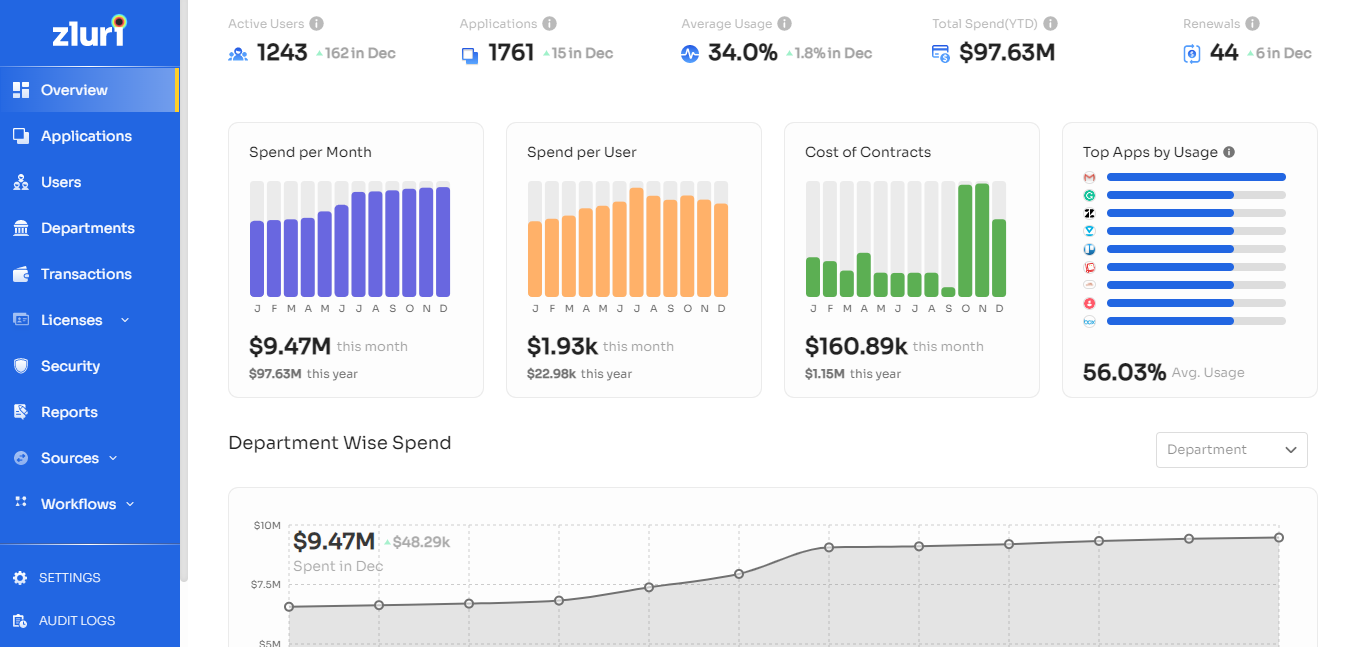
After a complete analysis of SaaS, all the apps are displayed in a single consolidated dashboard.
2: Detailed insights on app usage

Zluri will ensure that everything is noticed, and it will provide you with an overview of all SaaS applications together with details regarding their usage, compliance level, security level, and the amount of money spent on them.
Imagine the amount of time, money, and manual labour you will save by investing in a workflow automation technology such as Zluri.
3: Effortless vendor management workflows
With Zluri's vendor management workflows, all of your IT contracts are kept in one place, making them easy to find when needed. This helps you not only during the time of renewals but also helps you remain compliant with the requirements.
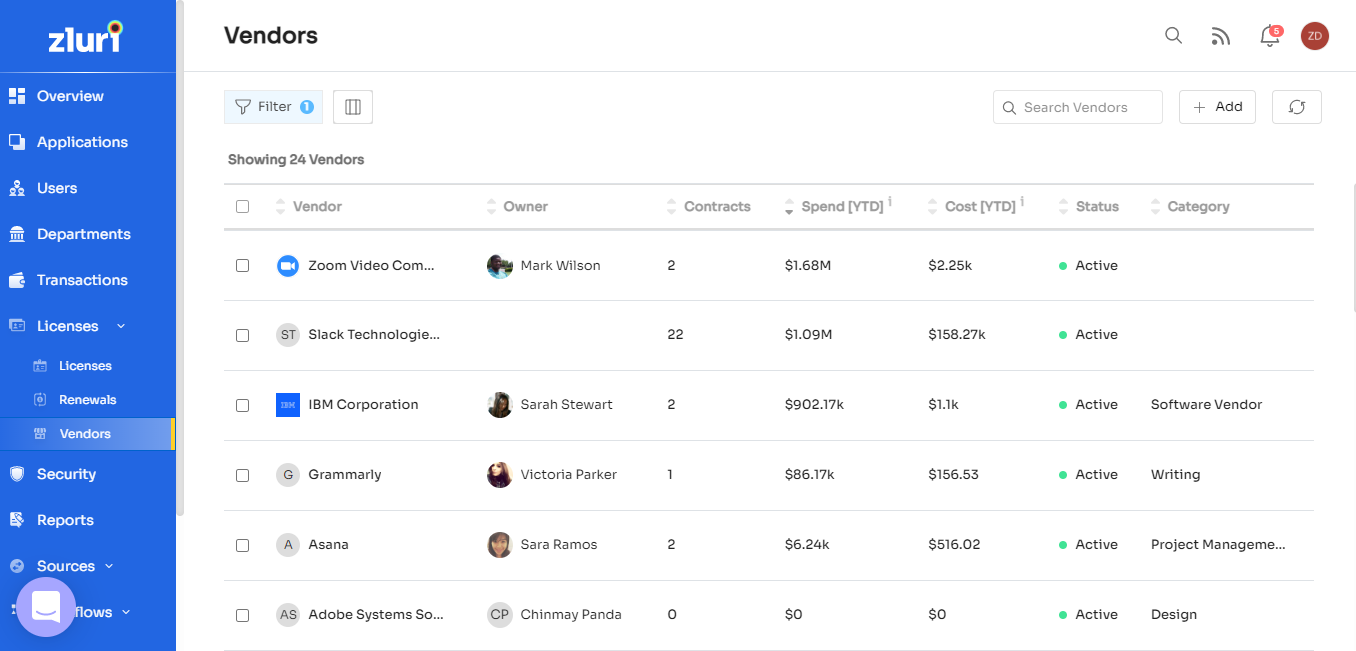
With access to all of the SaaS agreements in Zluri's dashboard, you will be able to perform an audit on your own to ensure that you are in compliance with the necessary standards like SOC 2, HIPAA, GDPR, and PCI DSS, amongst others.
4: Automatic alerts for renewal
Too many SaaS apps make it hard to remember when each app needs to be renewed. Also, you only sometimes know if an organization uses or benefits from a tool. In those cases, you should cancel the subscription or downgrade a tier. Zluri can make this seamless for you by sending you renewal alerts at least 30 days before the renewal date. This gives you time to analyze and make data-based decisions.
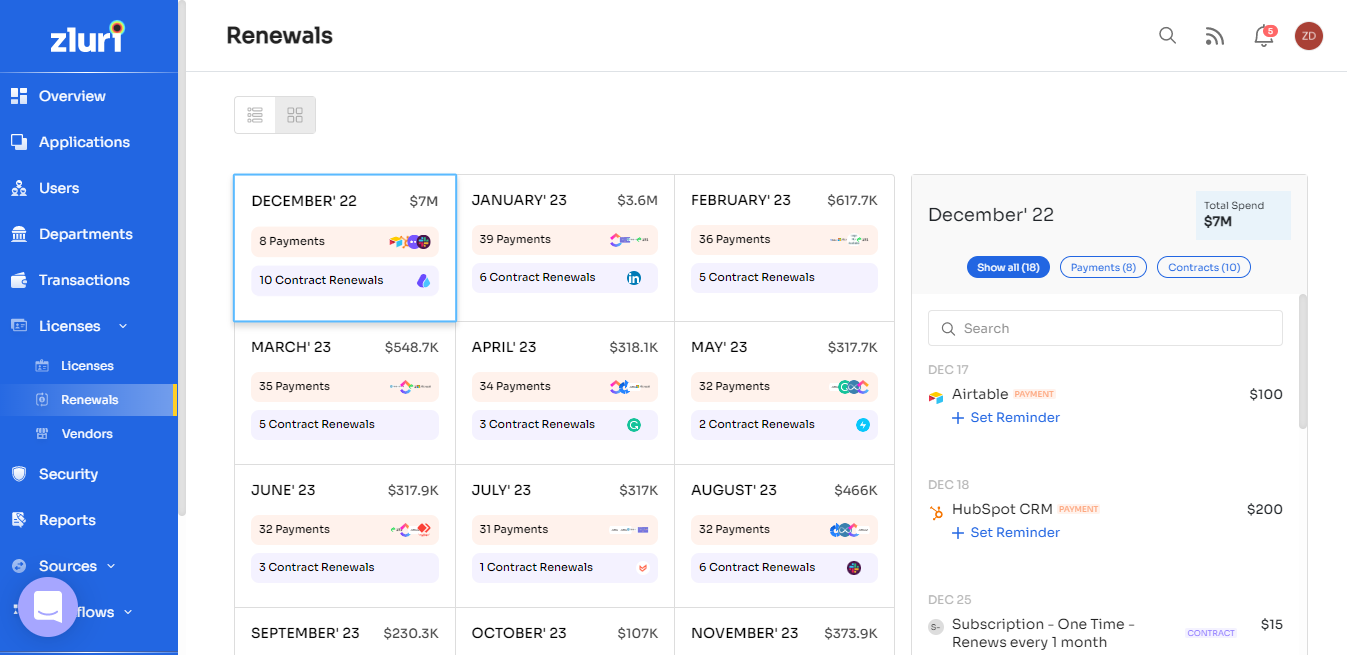
Zluri's Renewal calendar let you know when the contract is up for renewal and give you an idea of how to right-size the deployment. Suppose the date of the renewal is known. In that case, decisions about the renewal can be made ahead of time by looking at the original purchase contracts and working on strategies for negotiating.
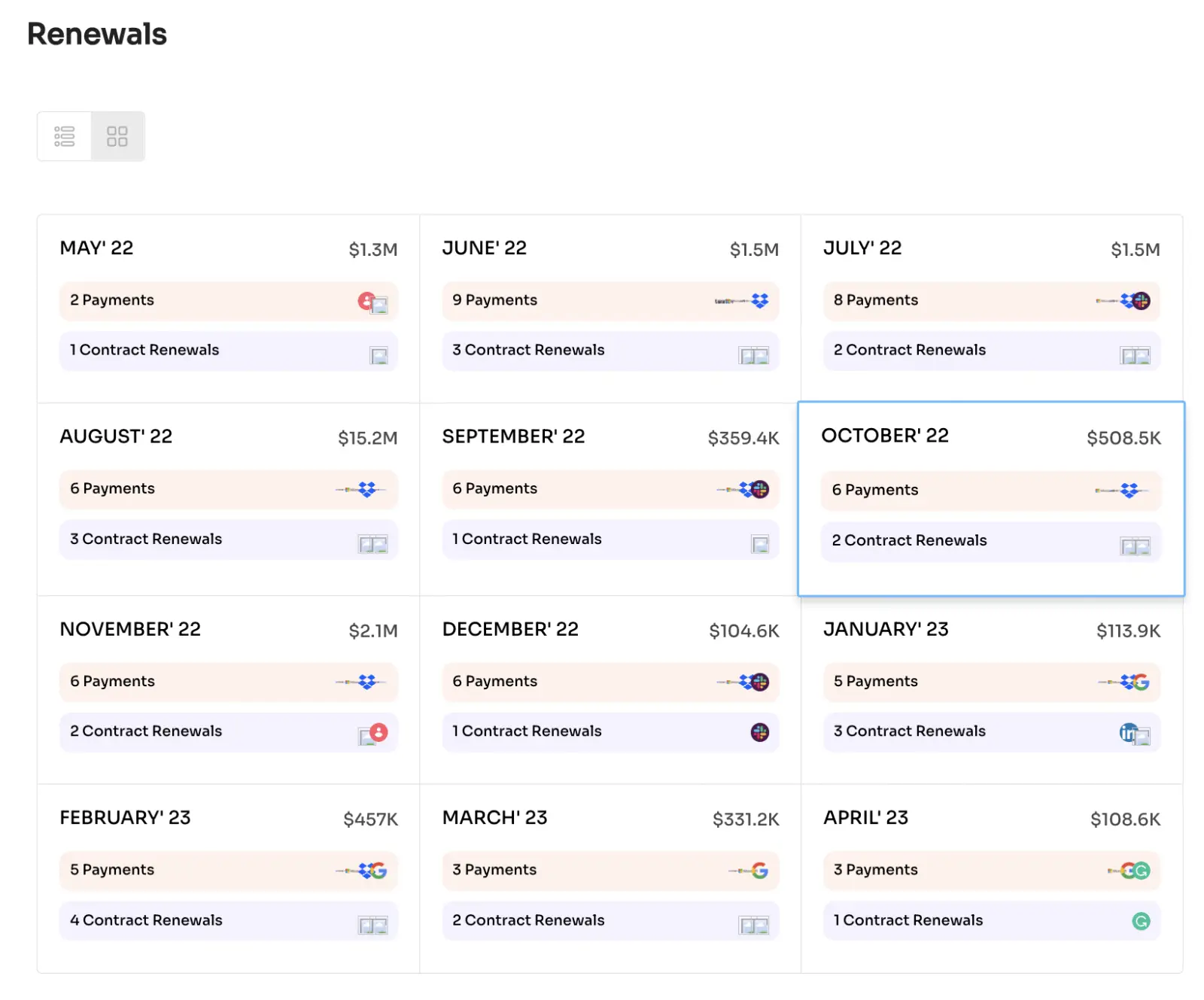
5: Automates employee Onboarding and Offboarding
Employee onboarding and offboarding are time-consuming tasks for the IT team. Getting new employees on board in new applications is a tedious job as the IT teams require coordination with other departments, like HR, department heads, etc., to give access to the required SaaS apps. Further, this becomes a repetitive process for the IT teams.
Additionally, the new recruits wait on the request, and their efficiency is impacted until they are provided with appropriate access to the required tools.
Likewise, offboarding is a difficult task. When the employees leave the organization, checking the list of tools they have access to and revoking each one of them or closing their accounts for each application is a mundane job. Especially if it is a large enterprise with thousands of employees, it isn't very easy to do it manually.
Thus, using automation tools for such activities as provisioning and deprovisioning helps reduce manual labour and improves the IT process and overall workflow efficiency. In addition, Zluri automates all monotonous, repetitive tasks like onboarding and offboarding employees in SaaS apps.
Onboarding workflows: Zluri's powerful automation engine saves time by automating the whole onboarding process. New employees can quickly get access to the tools they need to do their jobs well.
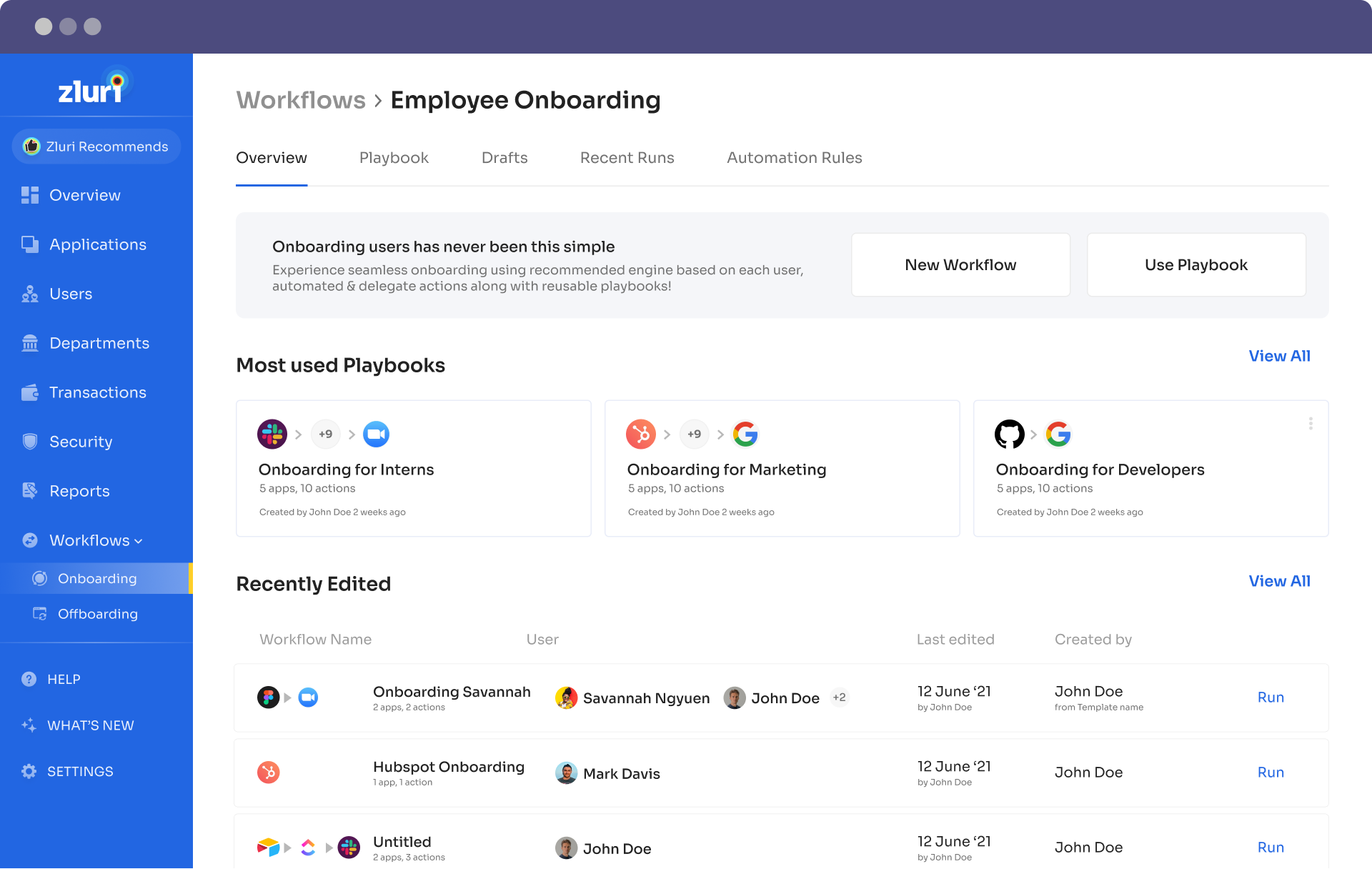
Zluri onboards new recruits with just a few clicks and provides in-app suggestions about channels and access levels so the IT team can add the new staff to the right groups or teams within the app.
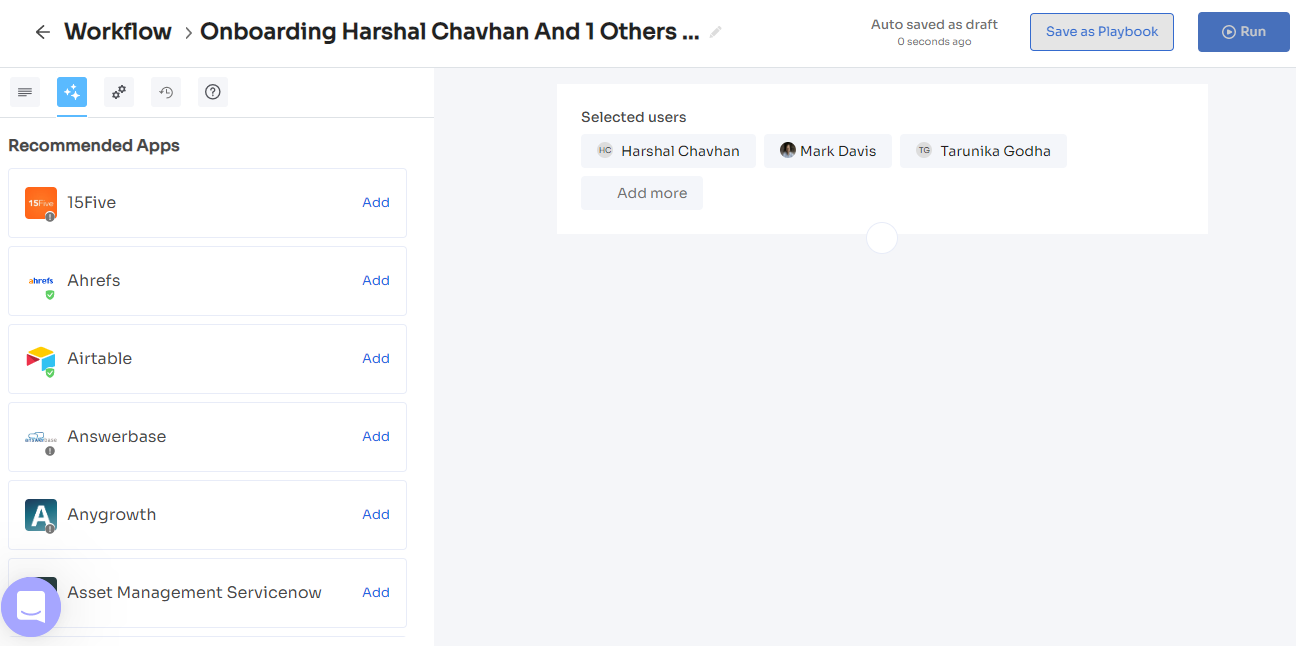
After onboarding to Zluri, it just takes a few minutes to comprehensively assess the SaaS apps used in your organization by integrating with your SSO, Finance/Expense management, and directly with apps.
Offboarding workflows: With Zluri's offboarding automation, All you have to do is click a button. During offboarding, Zluri ensures that the employees are revoked from all the apps they use during their organizational lifecycle. As a result, the former employee can't access company data or assets.
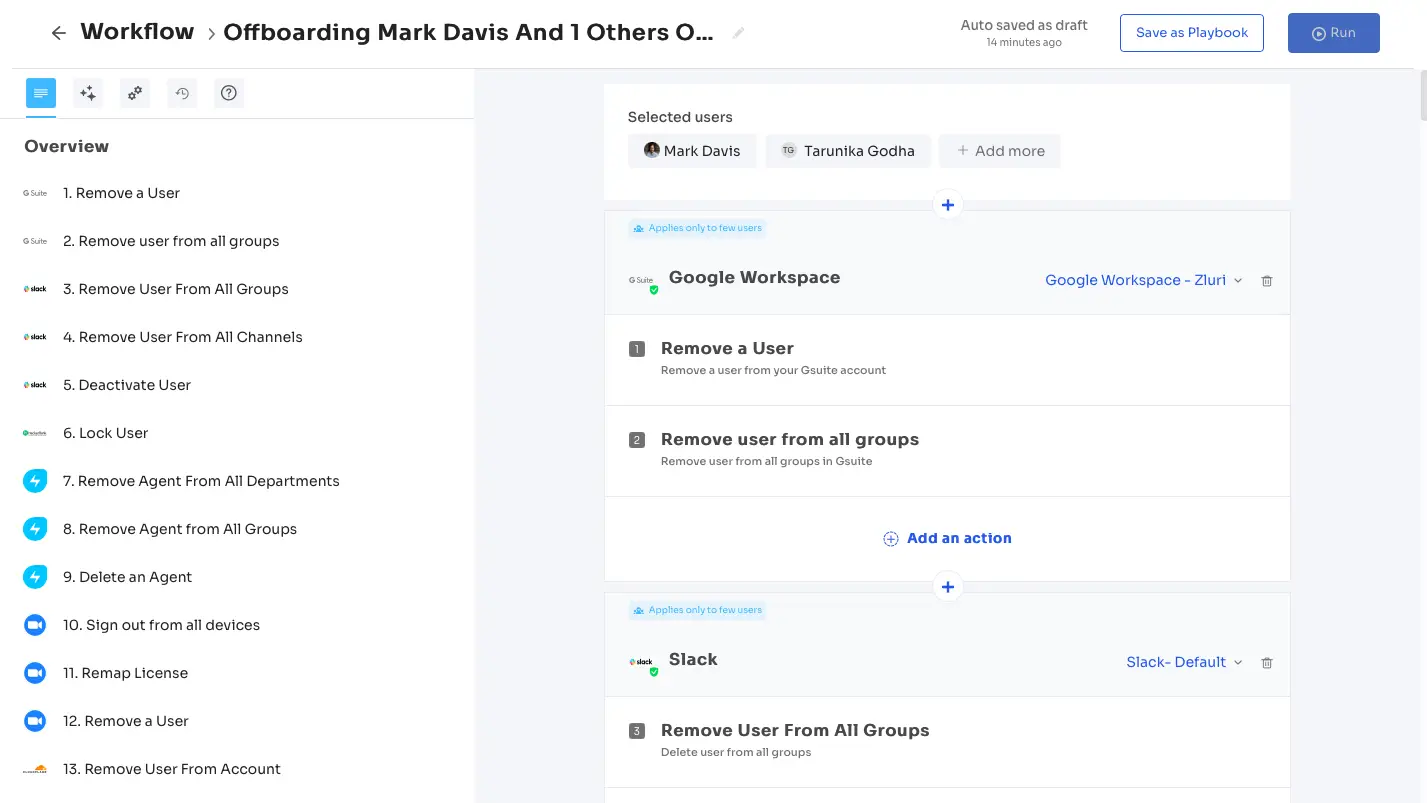
Before terminating the employee from these tools, Zluri creates backup data for all these SaaS apps. This data can be provided to the new admin of the application so they can use it for their role. It makes it easy for new people to take on their responsibilities.
6: Automates app requisitions
The IT teams take significant time while they work on SaaS license-related tasks as several processes are involved. To simplify their work, Zluri offers a self-serve model - Employee App Store (EAS)- that automates managing access to SaaS applications. It streamlines the SaaS approval process and app allocations and saves employees' waiting time for their requests.
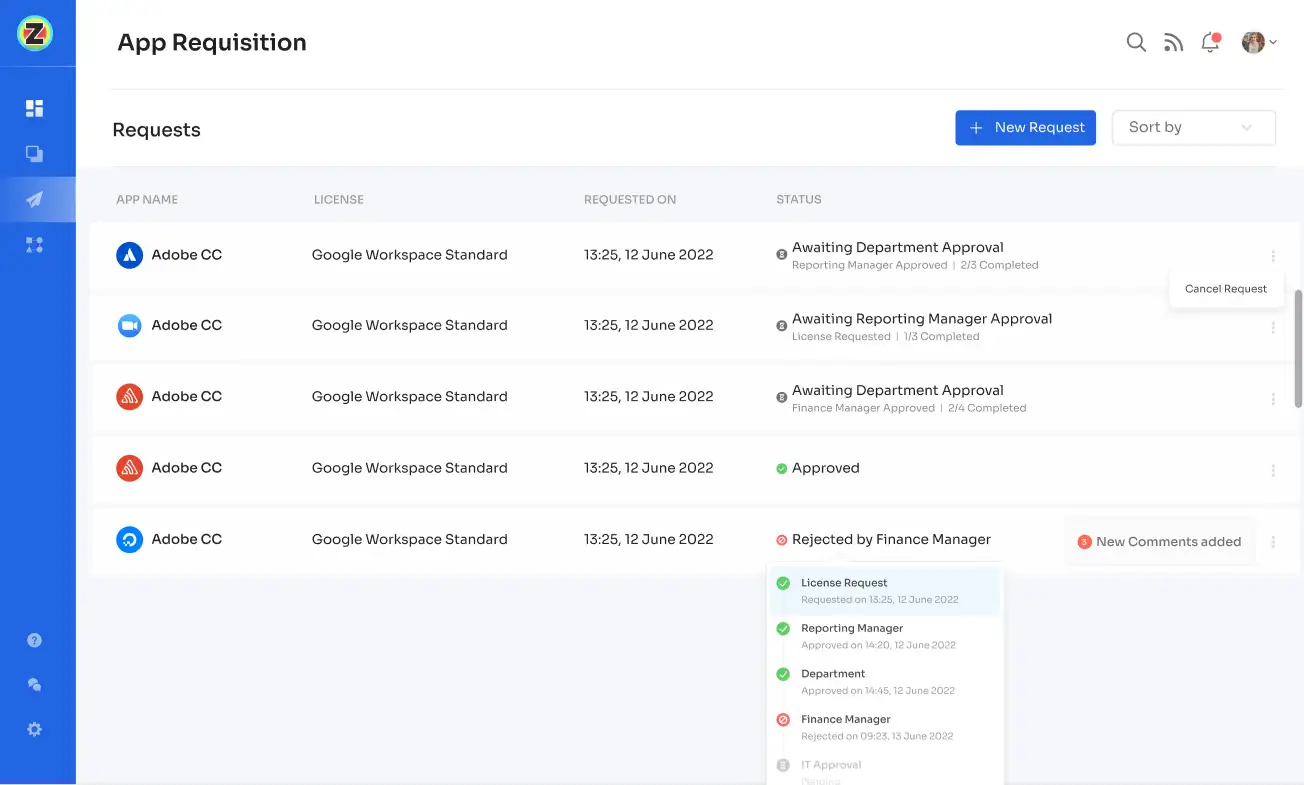
This model assists you with SaaS approvals as well as the distribution of licenses to your team. As a result, the onboarding process is decentralized, SaaS is maintained up to date, and it saves significant time on repetitive daily tasks.
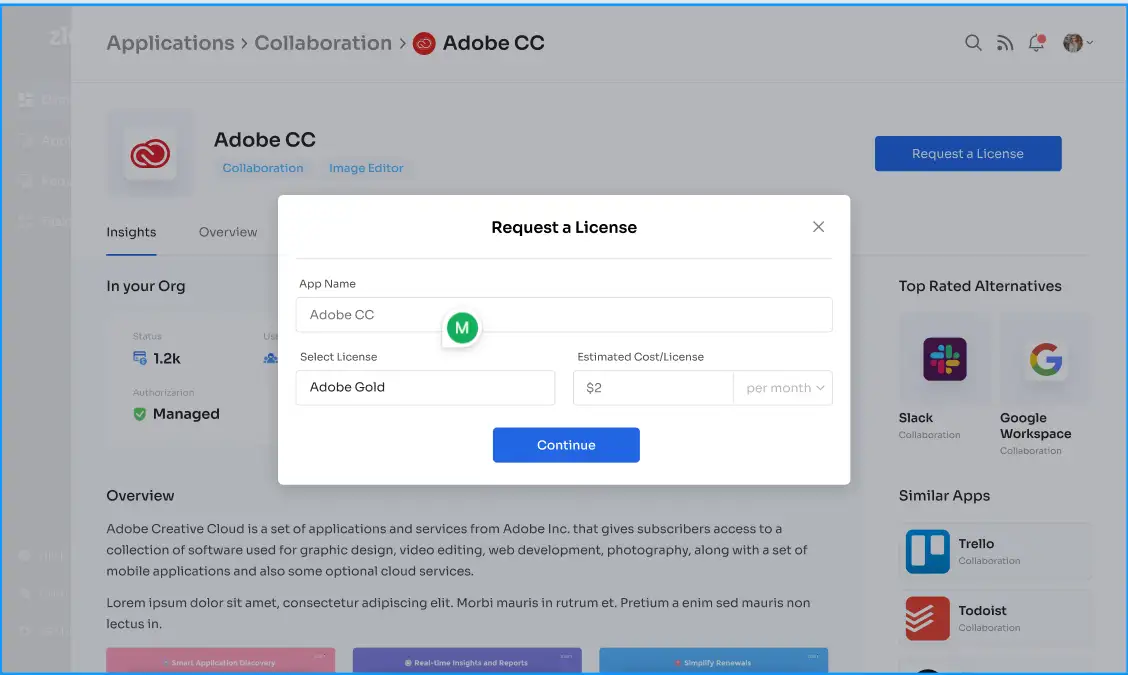
Moreover, EAS enables you to let employees select the apps they require from a store for employee apps that have been reviewed and approved by IT administrators. You may also maintain a list of the applications that are commonly used by the group and allow new users to select from it.
Related Blogs
See More
Subscribe to our Newsletter
Get updates in your inbox
